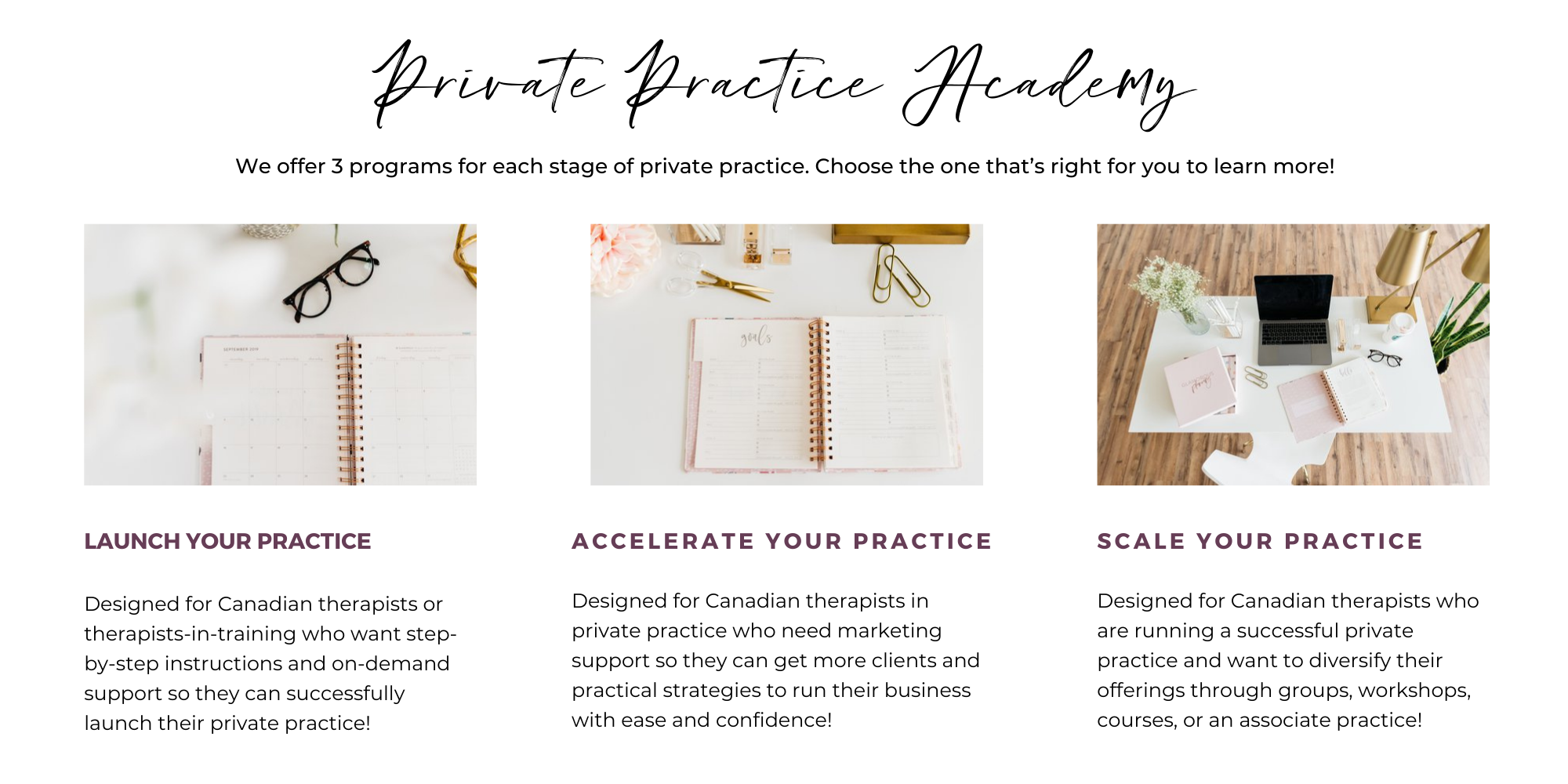Getting The Most Out of The Clients You Have
Throughout the course of my work, speaking with hundreds of therapists about the ins and outs of running a private practice, I have had countless conversations about money, marketing and all of the common challenges that come along with running a successful private practice.
One of the common topics I am asked about is getting new clients. Recently, I was speaking with a Business Mentorship client of mine who mentioned (for what felt like the ump-teenth time!) that they didn’t have enough clients. I knew that this particular client of mine did a lot of intakes and onboarded many new clients per month, so I got curious …
Why did this therapist feel like they had to be constantly marketing and bringing new clients into their practice?
If this is something you feel like you have to do constantly, then I want to suggest that you might be making a few fatal errors in how you operate your practice.
We are all susceptible of falling into the trap of our private practice being a revolving hamster wheel of clients and feeling pressured to continually reinvent our marketing efforts and drive new business in the door. Generally speaking, we shouldn’t be turning over dozens of clients a month and feeling like we need to on-board new clients on a weekly basis in order to have a successful practice.
For most of us, therapy is a commitment. The average person is in therapy for 6 months to 1 year or longer. If your clients are committed, turnover should maybe be one or two clients a month at most.
When I reflected on how many new consults my client was doing each month and how many people they were onboarding (and still feeling like they didn’t have enough clients), I got the feeling that something was wrong.
In my own practice, I haven’t advertised in a long time, and I have a very low turnover rate. In the past 6 months, I have closed with 3 clients and taken 3 new clients on who all came through word-of-mouth referrals. That’s a rate of about one every two months, and I’d say that’s pretty consistent for my practice.
When I dug a little deeper with my client, I learned that they had far more active clients on their caseload than necessary, and were making several crucial mistakes.
Consider these tips if you find yourself in a similar predicament as my client:
IDENTIFY YOUR OPTIMAL CASELOAD
Start with limiting the number of clients on your caseload. In most cases, having 30-35 regular clients will result in 15-20 appointments per week. Determine your ideal weekly caseload and identify if you might have too many or two few clients to keep a full (but not overloaded) schedule.
ASK YOUR CLIENTS TO COMMIT
Next, aim to move your existing clients onto a regular schedule. This may include offering psychoeducation about the effectiveness of therapy. We all know that therapy isn’t nearly as effective if a client doesn’t attend regularly. Our clients don’t always know this though, and can often benefit from understanding that they need to attend consistently in order to reach their goals.
Keep things organized and consistent by having your clients on a weekly or bi-weekly schedule. Not only will this help you feel confident in your revenue projection and caseload retention, but it will ensure that your clients can see you on a regular basis without having to schedule appointments around the limited openings in your calendar. When you bring up the regular schedule to your clients, highlight your goal to accommodate them consistently and when they want to see you, along with the increased likelihood of them achieving their goals.
RAISE YOUR RATES
You might also consider raising your rates. If you find yourself on the verge of starting a waitlist or are having trouble fitting existing clients into your schedule within a two-week timeframe, you are doing something right, but are likely undercharging.
Raise your rates for existing clients who can afford it and new clients that you onboard. A fee increase when your services are in high demand helps manage the number of new clients coming into your practice, and is a bonus for you for all of the hard work you are doing. For more information about raising your rates, be sure to read this article.
CONSIDER PASSIVE INCOME STREAMS
Finally, you may find that current, former, and prospective clients are interested in working with you in a different capacity. This may be a great opportunity to develop passive income streams in your private practice. Reflect on what types of products or services you might be able to offer that do not require you to be in a 1:1 session with a client. This might be e-books, online courses or downloadable resources or even group webinars depending on the subject matter.
If you are looking for support in managing your client caseload and making the most out of your current clients, check out our Accelerate Your Practice Program where you can get personalized support from an experienced coach!

